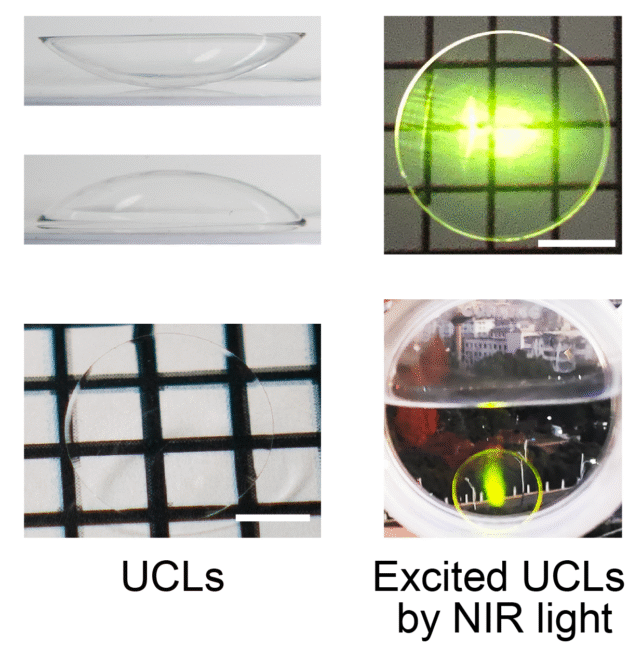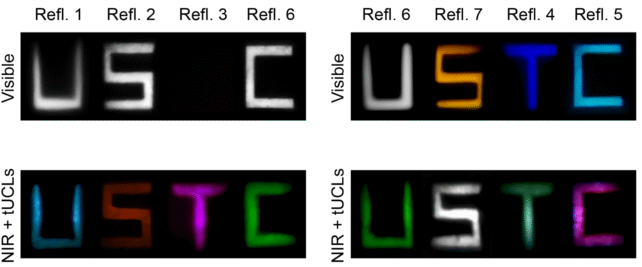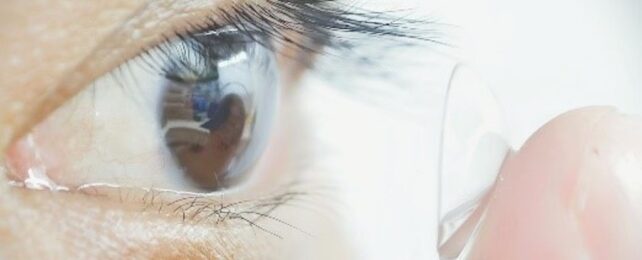Scientists in China have developed contact lenses that let wearers see light normally invisible to the human eye. Cooler still, the lenses work better through closed eyelids, and other versions could help correct color blindness.
The human eye can see a relatively limited range of colors – light with wavelengths of between about 400 and 700 nanometers. In typical human-centric fashion, we call that the 'visible' part of the spectrum, even though other animals can see beyond it.
In a new study, scientists have helped humans catch a glimpse of light between 800 and 1,600 nanometers in length, a range we normally can't see known as infrared. The trick is to pop in a pair of contact lenses embedded with nanoparticles that convert the infrared wavelengths into visible ones.
The specialty lenses don't disrupt a wearer's ability to see visible light, they just add infrared sources to the mix. In tests, wearers could identify flashing signals from infrared LEDs and tell which direction the light was coming from.
"It's totally clear cut: without the contact lenses, the subject cannot see anything, but when they put them on, they can clearly see the flickering of the infrared light," says Tian Xue, a neuroscientist at the University of Science and Technology of China.
Perhaps the most intriguing finding is that wearers could still see the infrared light with their eyes closed – in fact, their special lenses seemed to work better than having them open. That's because infrared light penetrates deeper into the skin than visible light, so the eyelids essentially filter out the more intense glare.

To be clear, the wearers aren't seeing 'new' colors – that requires a bulkier scientific setup. In this case, the nanoparticles absorb the infrared light and convert it into familiar, visible colors. It could help us pick up new information about our surroundings, with possible security or encryption applications, the team says.
Going a step further, the researchers showed that a more detailed version of the contact lenses could let users identify various parts of the infrared spectrum. The nanoparticles color-coded infrared wavelengths, so light at 808 nanometers appeared green, 980 nanometers was blue, and 1,532 nanometers looked red.
Extending on this finding, the team says it could eventually be adapted to help color-blind people see things they normally can't. Again, it wouldn't reveal the missing colors but convert those wavelengths into ones the person's eye can detect.
The downside of contact lenses is that they're so close to the retina that the converted light scatters, rendering things a bit blurry. Wearable glasses made with the same nanoparticles allowed for higher-resolution infrared light perception.
In follow-up tests with those glasses, the team was even able to show how infrared light reflecting off objects could encode different information that's invisible to the naked eye. Objects appear to us as certain colors because of the specific patterns of visible light that bounce off them into our retinas. The same thing happens with infrared light, but we just (normally) can't see it.

In tests, letters that appeared boring black or white to participants not wearing the glasses took on vibrant colors when they put the fancy specs on. That's because the infrared wavelengths bouncing off them were converted into specific visible wavelengths by the glasses.
The idea of walking around picking up heat signatures in the dark is a fun one, but don't expect to be granted Predator-vision any time soon. The nanoparticles can only pick up infrared light from strong LED sources for now, but the team hopes that the sensitivity can be increased in future work.
The research was published in the journal Cell.
